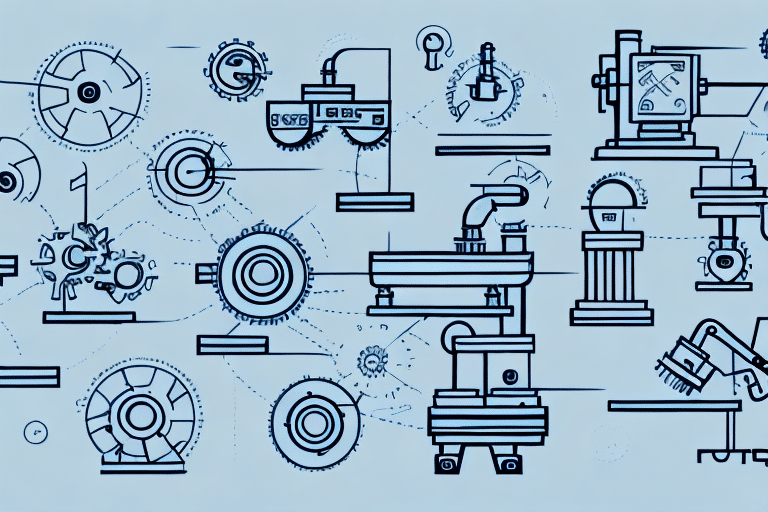Understanding Continuous Improvement
Continuous improvement is a systematic approach aimed at identifying, analyzing, and enhancing existing processes within an organization. Unlike large-scale, disruptive changes, continuous improvement focuses on incremental adjustments that collectively lead to significant enhancements over time. This philosophy encourages a culture where every employee is empowered to contribute to the ongoing refinement of operations, fostering an environment of sustained growth and adaptability.
According to a Harvard Business Review article, companies that embrace continuous improvement are better positioned to adapt to market changes and maintain a competitive edge. By consistently evaluating and improving processes, organizations can respond swiftly to new technologies, shifting consumer demands, and evolving industry standards.
Benefits of Continuous Improvement in Operations
Enhanced Productivity and Efficiency
Implementing continuous improvement strategies leads to streamlined operations, eliminating redundancies and optimizing workflows. A study by McKinsey & Company found that organizations focusing on continuous improvement can enhance productivity by up to 30%, significantly impacting their bottom line.
Fostering Innovation and Employee Engagement
Continuous improvement cultivates a workplace environment where innovation thrives. Employees are encouraged to think critically about existing processes and propose novel solutions, leading to a culture of creativity and collaboration. This not only boosts morale but also increases job satisfaction, reducing turnover rates and attracting top talent.
Proactive Problem Solving
By regularly assessing operations, organizations can identify potential issues before they escalate into major problems. This proactive approach minimizes downtime, reduces costs associated with errors, and ensures consistent delivery of high-quality products and services.
Implementing Continuous Improvement in Your Operations
Creating a Culture of Continuous Improvement
Successful implementation begins with fostering a culture that values and encourages ongoing enhancements. Leadership must demonstrate a commitment to continuous improvement by providing the necessary resources, training, and support to employees at all levels.
Identifying Areas for Improvement
Organizations should conduct regular assessments to pinpoint inefficiencies and areas ripe for enhancement. Tools such as SWOT analysis, process mapping, and employee feedback surveys can aid in identifying critical improvement opportunities.
Integrating Customer Feedback
Customer feedback is invaluable in shaping improvement initiatives. By understanding customer needs and expectations, organizations can tailor their processes to better serve their target audience, thereby increasing satisfaction and loyalty.
Tracking and Measuring Progress
Establishing clear metrics and key performance indicators (KPIs) is essential for monitoring the effectiveness of continuous improvement efforts. Regularly reviewing these metrics allows organizations to assess progress, make informed decisions, and adjust strategies as needed.
The Role of Technology in Continuous Improvement
Automation and Data Collection
Modern technology plays a pivotal role in facilitating continuous improvement. Automation tools can handle repetitive tasks, freeing up employees to focus on more strategic activities. Additionally, advanced data collection systems provide real-time insights into operational performance, enabling quicker and more accurate decision-making.
Predictive Analytics
Leveraging predictive analytics allows organizations to forecast trends and identify potential challenges before they arise. This foresight enables proactive measures, ensuring that operations remain efficient and resilient in the face of unforeseen obstacles.
Enhancing Collaboration
Collaborative technologies, such as project management software and communication platforms, streamline teamwork and information sharing. These tools ensure that all team members are aligned with improvement goals and can contribute effectively to ongoing initiatives.
Best Practices and Common Pitfalls
Defining Clear Goals
Setting specific, measurable, achievable, relevant, and time-bound (SMART) goals ensures that continuous improvement initiatives are focused and attainable. Clear objectives provide a roadmap for action and a basis for evaluating success.
Avoiding a One-Size-Fits-All Approach
Every organization has unique needs and challenges. Tailoring continuous improvement strategies to fit the specific context of the organization enhances their effectiveness and ensures that initiatives address the most pertinent issues.
Effective Change Management
Implementing change can be met with resistance. Effective change management strategies, including transparent communication, employee involvement, and adequate training, are crucial in overcoming obstacles and ensuring successful adoption of improvement initiatives.
Case Studies: Successful Continuous Improvement Programs
Several organizations have demonstrated the profound impact of continuous improvement on operations:
- Toshiba: Implemented a continuous improvement program that reduced production time by over 50%, enhancing overall efficiency.
- Volvo Trucks: Adopted continuous improvement practices in their production line, resulting in a 50% reduction in lead time and a 75% decrease in defects. Learn more about their approach on Volvo's sustainability page.
These examples illustrate how strategic continuous improvement efforts can lead to substantial operational gains and long-term success.
Sustaining a Culture of Continuous Improvement
Ongoing Training and Development
Providing continuous learning opportunities ensures that employees remain skilled and informed about the latest best practices and tools. This investment in human capital is essential for maintaining momentum in improvement initiatives.
Employee Engagement Strategies
Engaging employees through recognition programs, incentives, and opportunities for professional growth fosters a sense of ownership and motivation. When employees feel valued and empowered, they are more likely to contribute actively to continuous improvement efforts.
Regular Feedback and Adaptation
Soliciting regular feedback from employees and customers enables organizations to refine their improvement strategies continually. Remaining adaptable ensures that initiatives stay relevant and effective in addressing evolving challenges.
Conclusion
Continuous improvement is a cornerstone of successful business operations, driving organizations to consistently enhance their processes, boost productivity, and maintain a competitive advantage. By fostering a culture that values ongoing evaluation and adaptation, leveraging technology, and adhering to best practices, organizations can achieve sustained growth and operational excellence.
Embracing continuous improvement not only optimizes current operations but also paves the way for future innovations and advancements, ensuring that organizations remain resilient and responsive in an ever-changing marketplace.





















